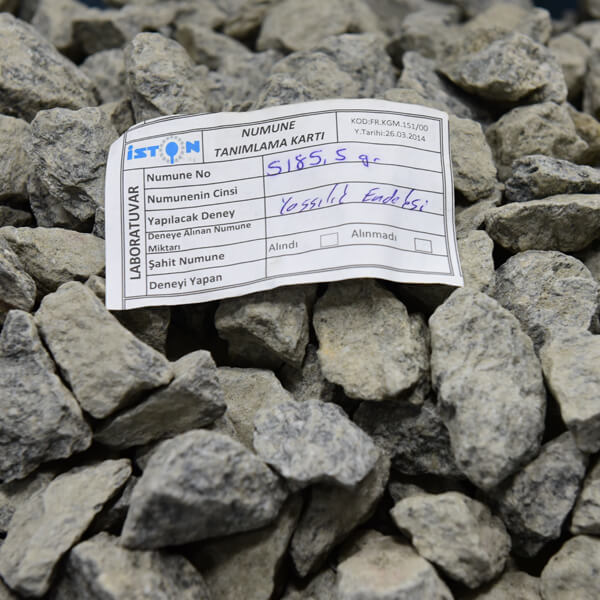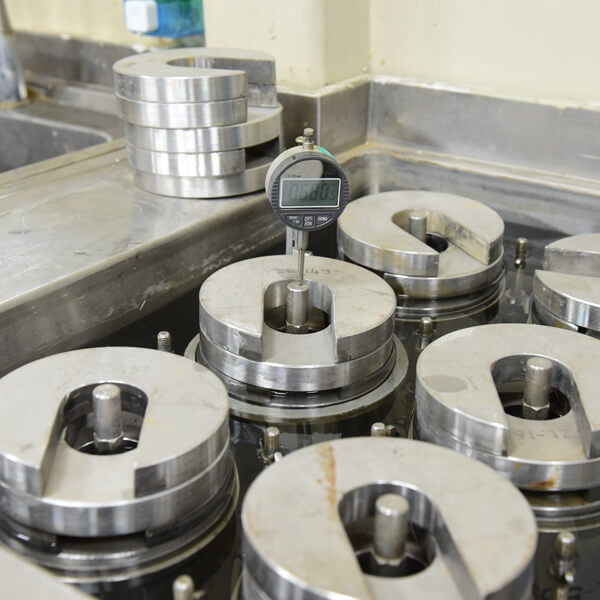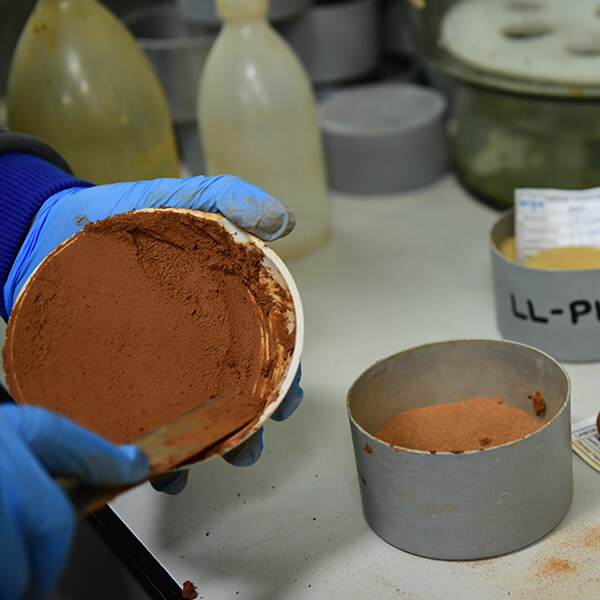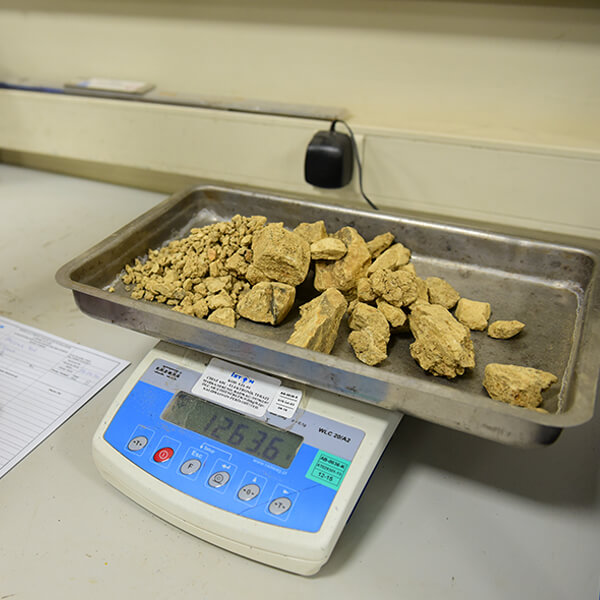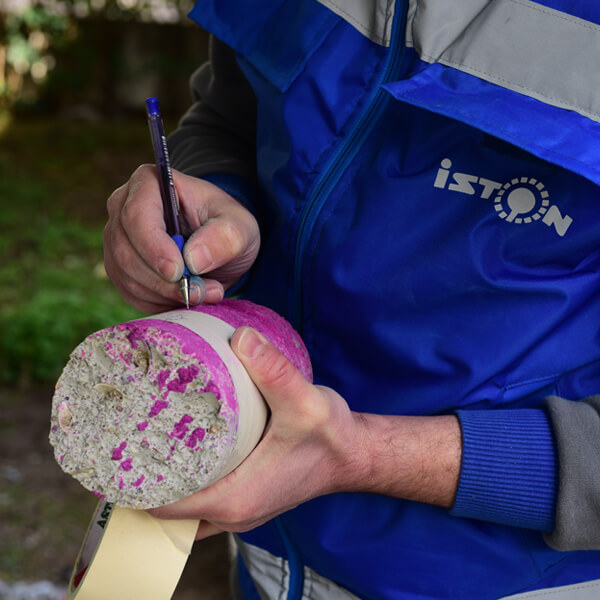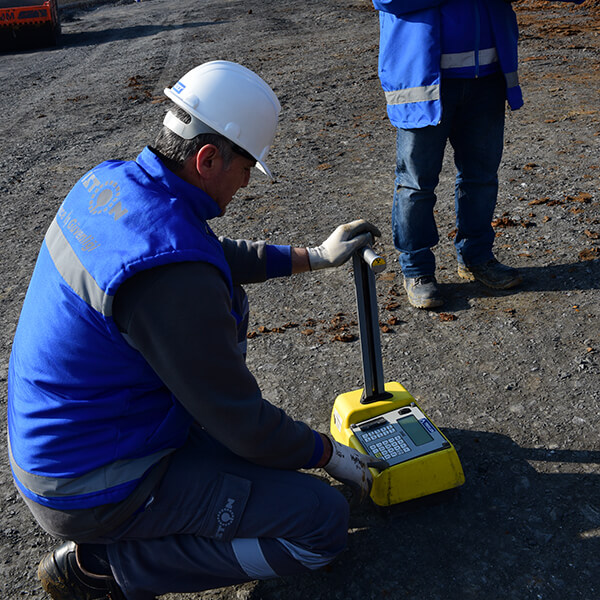IS YOUR BUILDING RESISTANT TO EARTHQUAKE?
ASK ISTON
ISTON Building and Materials Laboratory
RYTEIE 2019 (Principles on the Identification of Risky Buildings)
Performing earthquake safety analysis (static investigation) of the building within the scope of Law No. 6306 on the identification of risky buildings.
TBDY 2018 (Turkish Building Earthquake Regulation)
Performing building analysis (static investigation) according to the Turkish Building Earthquake Regulation.
Our Laboratories on the European Side
Yenibosna Laboratory
Hadimkoy Laboratory
Our Laboratories on the Asian Side
Altunizade Laboratory
Tuzla Laboratoryuvar
İSTON İstanbul Concrete Elements and Ready Mixed Concrete Factories Corporation was founded in 1986 by Istanbul Metropolitan Municipality in order to provide quality solutions to the city’s infrastructure and superstructure requirements. İston products are preferred at first Istanbul and many cities in Turkey as well as Iston exports to many different countries in the world.
In addition to the production of urban furniture, playground equipments, concrete and reinforced concrete pipes, paving stones and borders, ready-mixed concrete, prefabricated infrastructure elements
İSTON also provides architectural design, urban project implementation, contracting and building inspection services.
İSTON carries out all activities in accordance with Occupational Health and Safety Management System and Environmental Management and Quality Assurance System, Information Security Management System, Quality Laboratory Management System. İSTON, which adopts a sustainable development model as a corporate principle, has the International Concrete Sustainability Council Gold Certificate in its production facilities. İSTON, which offers new products and technologies to the urban life and construction sector with its R&D and design studies, also carries out national and international projects within the scope of industry and academic cooperation.
İSTON offers products and designs which are compatible with future of cities, also adds cities vision in terms value of aesthetic, comfort and quality. İSTON, one of the most comprehensive company in the construction sector in the World, having more than 1800 products range, expands its field of activity with new products and new fields of activity. As an enterprise of Istanbul Metropolitan Municipality, İSTON create solutions byaddressing the expectations and needs of the city dynamics from a wide framework with its participatory democratic management approach.
İSTON continues to make a difference in cities with the activities that support the “New Generation Municipality” understanding of Istanbul Metropolitan Municipality. İston is a member of Ready Mixed Concrete Association and Prefabricated Association.
İSTON carries out all activities in accordance with Occupational Health and Safety Management System and Environmental Management and Quality Assurance System, Information Security Management System, Quality Laboratory Management System. İSTON, which adopts a sustainable development model as a corporate principle, has the International Concrete Sustainability Council Gold Certificate in its production facilities. İSTON, which offers new products and technologies to the urban life and construction sector with its R&D and design studies, also carries out national and international projects within the scope of industry and academic cooperation.
İSTON offers products and designs which are compatible with future of cities, also adds cities vision in terms value of aesthetic, comfort and quality. İSTON, one of the most comprehensive company in the construction sector in the World, having more than 1800 products range, expands its field of activity with new products and new fields of activity. As an enterprise of Istanbul Metropolitan Municipality, İSTON create solutions byaddressing the expectations and needs of the city dynamics from a wide framework with its participatory democratic management approach.
İSTON continues to make a difference in cities with the activities that support the “New Generation Municipality” understanding of Istanbul Metropolitan Municipality. İston is a member of Ready Mixed Concrete Association and Prefabricated Association.
RYTEİE 2019 (Principles on the Identification of Risky Buildings)
Documents to be provided in the examination carried out within the scope of Law No. 6306:
1) Application petition of at least one of the flat owners
2) Signatures and copies of title deeds to ensure absolute majority in the building
3) Current title deed encumbrance* certificate from the land registry
4) Photocopy of the applicant's identity card
5) National identification information of the building (UAVT) from local municipalities
6) Document indicating that there is no other building on the parcel where the building is located (from the district municipality)
7) Property tax building notification
8) Static project of the building
9) Soil investigation report of the building
The encumbrance certificate is a document that states the rights such as pre-purchase, seizure, usufruct, preemption, and easement, which are placed on any real estate for the benefit of third parties and that limit the right of ownership on the real estate in different ways.
TBDY 2018 (Turkish Building Earthquake Regulation)
Performing building analysis (static investigation) according to the Turkish Building Earthquake Regulation.
It is the examination and reporting carried out by taking sufficient samples (according to limited, medium, comprehensive knowledge levels) in accordance with the provisions specified in the seventh section titled evaluation and retrofitting of existing buildings, annexed to the Law No. 26454 dated 18.03.2018.
Earthquake safety analysis is a review that provides a basis for retrofit projects and provides all the data regarding the current state of the building.
In earthquake safety analysis, material work is carried out on all floors.The activities are completed by modeling the building in a computer environment and preparing the earthquake safety analysis report (performing static investigation).
Documents to be provided for the examination carried out within the scope of Law No. 26454:
1) Application petition of at least one of the flat owners
2) Photocopy of the applicant's title deed
3) Photocopy of the applicant's identity card
4) Project of the building
5) Static project of the building
6) Soil investigation report of the building
Documents to be provided in the examination carried out within the scope of Law No. 6306:
1) Application petition of at least one of the flat owners
2) Signatures and copies of title deeds to ensure absolute majority in the building
3) Current title deed encumbrance* certificate from the land registry
4) Photocopy of the applicant's identity card
5) National identification information of the building (UAVT) from local municipalities
6) Document indicating that there is no other building on the parcel where the building is located (from the district municipality)
7) Property tax building notification
8) Static project of the building
9) Soil investigation report of the building
The encumbrance certificate is a document that states the rights such as pre-purchase, seizure, usufruct, preemption, and easement, which are placed on any real estate for the benefit of third parties and that limit the right of ownership on the real estate in different ways.
TBDY 2018 (Turkish Building Earthquake Regulation)
Performing building analysis (static investigation) according to the Turkish Building Earthquake Regulation.
It is the examination and reporting carried out by taking sufficient samples (according to limited, medium, comprehensive knowledge levels) in accordance with the provisions specified in the seventh section titled evaluation and retrofitting of existing buildings, annexed to the Law No. 26454 dated 18.03.2018.
Earthquake safety analysis is a review that provides a basis for retrofit projects and provides all the data regarding the current state of the building.
In earthquake safety analysis, material work is carried out on all floors.The activities are completed by modeling the building in a computer environment and preparing the earthquake safety analysis report (performing static investigation).
Documents to be provided for the examination carried out within the scope of Law No. 26454:
1) Application petition of at least one of the flat owners
2) Photocopy of the applicant's title deed
3) Photocopy of the applicant's identity card
4) Project of the building
5) Static project of the building
6) Soil investigation report of the building
1. Detector Device This device works with the help of magnetic waves.It determines the places of the (reinforcement) irons in the concrete mass, the number of vertical reinforcements, the diameter of the reinforcement, the concrete cover and the stirrup spacings.
2. Concrete Hammer By applying impact to the bare concrete mass, it indirectly gives an idea about the compressive strength of the concrete.(The plaster surface is removed in ≈30x30 cm.)
3. Core Drilling The reinforcement is marked with the Cover Master device. The places to be cored are selected meticulously.At the end of the work, the coring areas are filled with special quick set material.Crushing work is performed by cutting and capping in the laboratory.The number of cores shall be reduced in case of insufficient column dimensions.(Plaster repairs are excluded.)
4. Corrosion Risk Identification With the help of chemical solution, the corrosion status (risk) of the iron exposed from the concrete surface due to the carbonation depth inside is identified.
5. Determination of Reinforcement Diameter Determination of reinforcement diameter by concrete cover stripping in the columns.
6. Performing Application Control If there is a reinforced concrete project of the building, controlling the application with the project.
7. Issuing the Survey Issuing the survey of the building carrier system.(in modeled buildings)
8. Performing Static Investigation Modeling the building in computer environment and preparing the earthquake safety analysis report.(Performing static investigation)
2. Concrete Hammer By applying impact to the bare concrete mass, it indirectly gives an idea about the compressive strength of the concrete.(The plaster surface is removed in ≈30x30 cm.)
3. Core Drilling The reinforcement is marked with the Cover Master device. The places to be cored are selected meticulously.At the end of the work, the coring areas are filled with special quick set material.Crushing work is performed by cutting and capping in the laboratory.The number of cores shall be reduced in case of insufficient column dimensions.(Plaster repairs are excluded.)
4. Corrosion Risk Identification With the help of chemical solution, the corrosion status (risk) of the iron exposed from the concrete surface due to the carbonation depth inside is identified.
5. Determination of Reinforcement Diameter Determination of reinforcement diameter by concrete cover stripping in the columns.
6. Performing Application Control If there is a reinforced concrete project of the building, controlling the application with the project.
7. Issuing the Survey Issuing the survey of the building carrier system.(in modeled buildings)
8. Performing Static Investigation Modeling the building in computer environment and preparing the earthquake safety analysis report.(Performing static investigation)
The steps that our citizens should follow during and after the application for building inspection are as follows:
1. INDIVIDUAL APPLICATIONS
• By White Desk application
• By calling by phone
• By sending e-mail
• Via www.iston.istanbul website
2. INFORMATION REQUESTED FROM THE PERSON AND COST ANALYSIS
• Number of floors (including basement)
• Building housing area (in m2)
• Calculation of approximate cost
• Making an optional offer
3. ORDER REQUEST
• An order is placed upon a personal or administrative application.
• An appointment is made by calling the customer for the paid orders.
4. ON-SITE INSPECTION AND REPORTING PROCESS
• Detector device
• Concrete hammer
• Core drilling
• Chemical solution
• Concrete cover stripping and reinforcement detection
• Building reinforced concrete project control
• Issuing the survey of the building carrier system
• Issuing the analysis report
1. INDIVIDUAL APPLICATIONS
• By White Desk application
• By calling by phone
• By sending e-mail
• Via www.iston.istanbul website
2. INFORMATION REQUESTED FROM THE PERSON AND COST ANALYSIS
• Number of floors (including basement)
• Building housing area (in m2)
• Calculation of approximate cost
• Making an optional offer
3. ORDER REQUEST
• An order is placed upon a personal or administrative application.
• An appointment is made by calling the customer for the paid orders.
4. ON-SITE INSPECTION AND REPORTING PROCESS
• Detector device
• Concrete hammer
• Core drilling
• Chemical solution
• Concrete cover stripping and reinforcement detection
• Building reinforced concrete project control
• Issuing the survey of the building carrier system
• Issuing the analysis report
RISK IDENTIFICATION BY CITIZENS
Citizens can have their buildings identified in terms of risky buildings by institutions and organizations licensed by the Ministry.At this stage, this identification can be made upon the application of one of the owners or his/her legal representative.The risky building identification request is made through the electronic software system.If there is a title deed with a land share since no floor servitude or floor ownership has been established in accordance with the Property Ownership Law No. 634 dated 23/6/1965, the risky building identification of the building actually located on the land is made by the owner of the land share, who owns the building.If the building on the land belongs to someone else and this is stated in the land registry, risky building identification is made by the party in favor whom there is an annotation.Risky Buildings are identifies according to the Principles on the Identification of Risky Buildings in Annex-2 of the Implementation Regulation of the Law No. 6306.
BUILDINGS IDENTIFIED AS RISKY AND DEMOLISHING DECISION BY THE MINISTRY
The buildings identified to be risky as a result of the identifications are reported to the Provincial Directorate of Environment and Urbanization, or to the Administration if authorized, by the institutions and organizations that made the identification.Provincial Directorates of Environment and Urbanization or Administrations examine the reports; if there are missing or incorrect issues in the reports, the reports are returned to the relevant persons, and the annotation notification regarding other appropriate identifications is sent to the relevant land registry directorate.In case of transfer of directorate or authority, the Administration records the information about the demolished risky buildings in the electronic software system.The Administration notifies the Directorate in bimonthly periods of information and documents related to risky buildings that cannot be evacuated and demolished.The buildings that cannot be demolished are demolished or have them demolished by the Ministry or the Directorate.The owners are responsible for the costs of the evacuation and demolition made or have it made by the Ministry or the Administration, in proportion to their shares, since they were not demolished by the owners.The cost of the demolition process is executed and collected from the owners in accordance with the provisions of the Law No. 6183 on the Collection of Public Receivables.
RISK IDENTIFICATION BY CITIZENS
Citizens can have their buildings identified in terms of risky buildings by institutions and organizations licensed by the Ministry.At this stage, this identification can be made upon the application of one of the owners or his/her legal representative.The risky building identification request is made through the electronic software system.If there is a title deed with a land share since no floor servitude or floor ownership has been established in accordance with the Property Ownership Law No. 634 dated 23/6/1965, the risky building identification of the building actually located on the land is made by the owner of the land share, who owns the building.If the building on the land belongs to someone else and this is stated in the land registry, risky building identification is made by the party in favor whom there is an annotation.Risky Buildings are identifies according to the Principles on the Identification of Risky Buildings in Annex-2 of the Implementation Regulation of the Law No. 6306.
BUILDINGS IDENTIFIED AS RISKY AND DEMOLISHING DECISION BY THE MINISTRY
Citizens can have their buildings identified in terms of risky buildings by institutions and organizations licensed by the Ministry.At this stage, this identification can be made upon the application of one of the owners or his/her legal representative.The risky building identification request is made through the electronic software system.If there is a title deed with a land share since no floor servitude or floor ownership has been established in accordance with the Property Ownership Law No. 634 dated 23/6/1965, the risky building identification of the building actually located on the land is made by the owner of the land share, who owns the building.If the building on the land belongs to someone else and this is stated in the land registry, risky building identification is made by the party in favor whom there is an annotation.Risky Buildings are identifies according to the Principles on the Identification of Risky Buildings in Annex-2 of the Implementation Regulation of the Law No. 6306.
BUILDINGS IDENTIFIED AS RISKY AND DEMOLISHING DECISION BY THE MINISTRY
The buildings identified to be risky as a result of the identifications are reported to the Provincial Directorate of Environment and Urbanization, or to the Administration if authorized, by the institutions and organizations that made the identification.Provincial Directorates of Environment and Urbanization or Administrations examine the reports; if there are missing or incorrect issues in the reports, the reports are returned to the relevant persons, and the annotation notification regarding other appropriate identifications is sent to the relevant land registry directorate.In case of transfer of directorate or authority, the Administration records the information about the demolished risky buildings in the electronic software system.The Administration notifies the Directorate in bimonthly periods of information and documents related to risky buildings that cannot be evacuated and demolished.The buildings that cannot be demolished are demolished or have them demolished by the Ministry or the Directorate.The owners are responsible for the costs of the evacuation and demolition made or have it made by the Ministry or the Administration, in proportion to their shares, since they were not demolished by the owners.The cost of the demolition process is executed and collected from the owners in accordance with the provisions of the Law No. 6183 on the Collection of Public Receivables.
RISK IDENTIFICATION BY CITIZENS
Citizens can have their buildings identified in terms of risky buildings by institutions and organizations licensed by the Ministry.At this stage, this identification can be made upon the application of one of the owners or his/her legal representative.The risky building identification request is made through the electronic software system.If there is a title deed with a land share since no floor servitude or floor ownership has been established in accordance with the Property Ownership Law No. 634 dated 23/6/1965, the risky building identification of the building actually located on the land is made by the owner of the land share, who owns the building.If the building on the land belongs to someone else and this is stated in the land registry, risky building identification is made by the party in favor whom there is an annotation.Risky Buildings are identifies according to the Principles on the Identification of Risky Buildings in Annex-2 of the Implementation Regulation of the Law No. 6306.
BUILDINGS IDENTIFIED AS RISKY AND DEMOLISHING DECISION BY THE MINISTRY
ISTON manufactures all of its products on a facility basis, with product certificates from TSE, in accordance with the relevant standards.It has the G conformity certificate, which is required by the Ministry of Environment and Urbanization, in its Ready-Mixed Concrete facilities.
Being aware of the importance of management systems and compliance with legal regulations in its facilities, ISTON has the following certificates:
• Quality Management System
• Environmental Management System
• Occupational Health and Safety Management System
• Information Security Management System
• Laboratory Accreditation Certificate
• Certificate of Approval for Laboratories from which Testing Services can be Received
• Ready-Mixed Concrete G Conformity Certificates
• Hadimkoöy Plant International Concrete Sustainability Council Certificate (CSC) Gold Certificate
• Tuzla Plant International Concrete Sustainability Council Certificate (CSC) Silver Certificate
• Environmental Permit Certificate
Within the scope of the Concrete Sustainability Council (CSC) - Certification System for Responsible Use of Resources, our Tuzla Plant has been awarded the Silver Level Certificate and our Hadimkoy Plant has been awarded the Gold Level Certificate.
Being aware of the importance of management systems and compliance with legal regulations in its facilities, ISTON has the following certificates:
• Quality Management System
• Environmental Management System
• Occupational Health and Safety Management System
• Information Security Management System
• Laboratory Accreditation Certificate
• Certificate of Approval for Laboratories from which Testing Services can be Received
• Ready-Mixed Concrete G Conformity Certificates
• Hadimkoöy Plant International Concrete Sustainability Council Certificate (CSC) Gold Certificate
• Tuzla Plant International Concrete Sustainability Council Certificate (CSC) Silver Certificate
• Environmental Permit Certificate
Within the scope of the Concrete Sustainability Council (CSC) - Certification System for Responsible Use of Resources, our Tuzla Plant has been awarded the Silver Level Certificate and our Hadimkoy Plant has been awarded the Gold Level Certificate.
